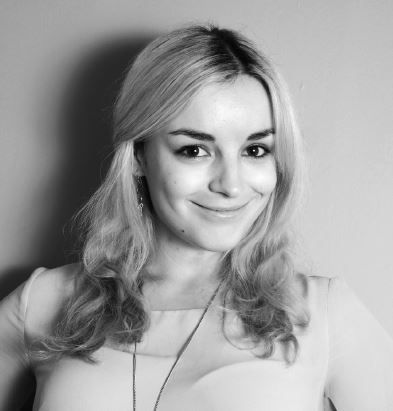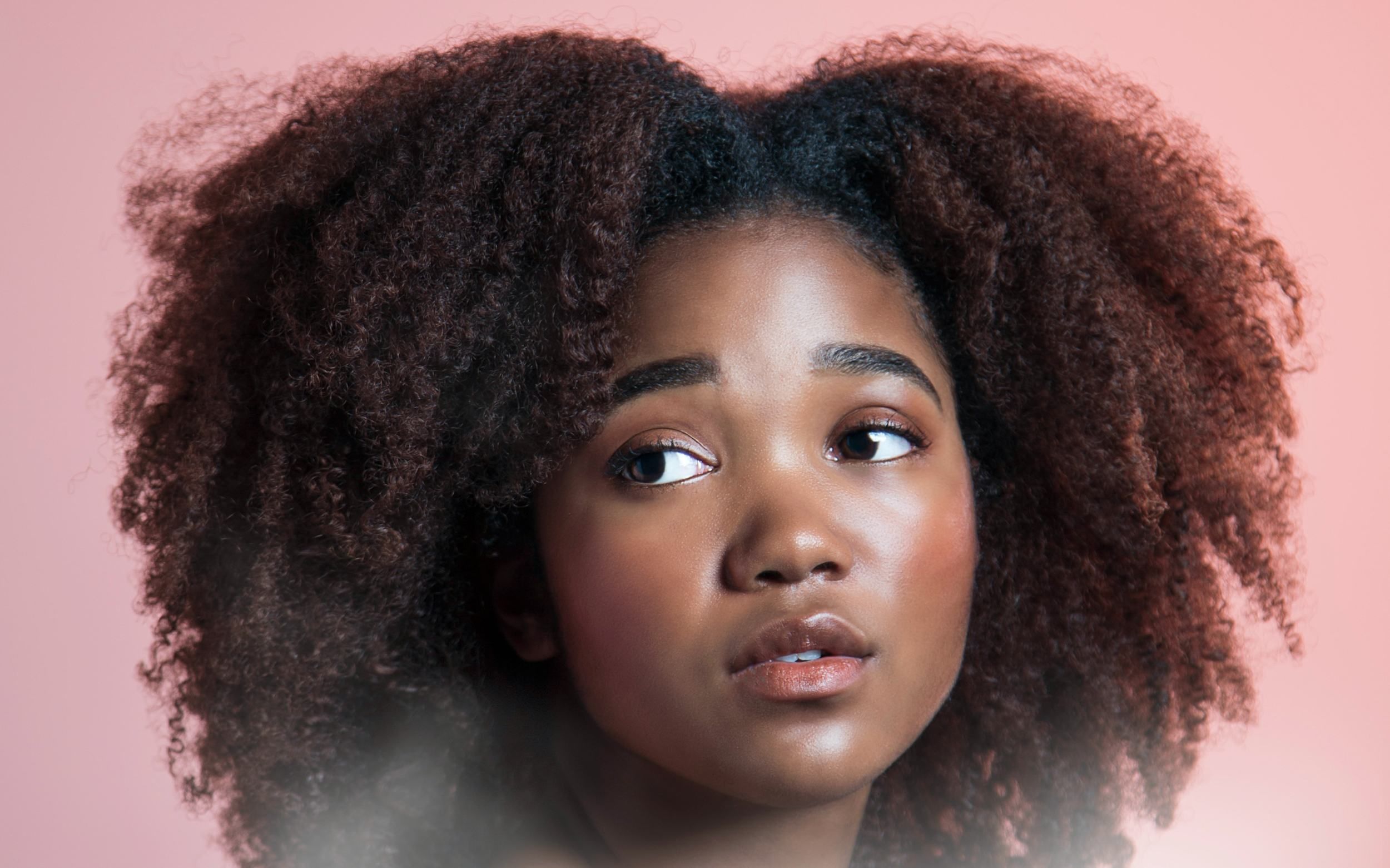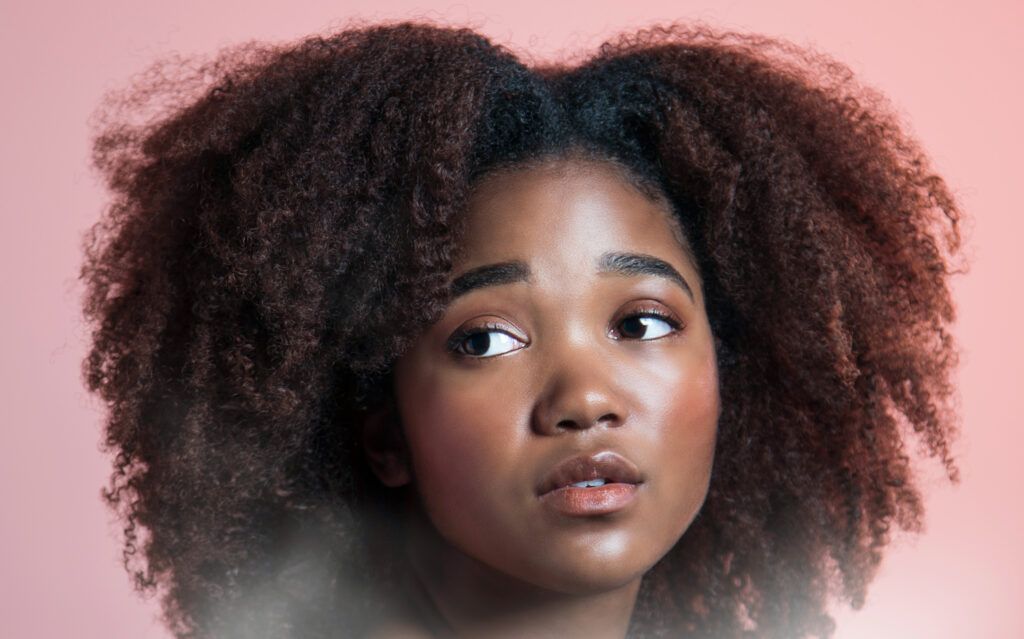Setting up a photograph is, to many, as simple as pointing the lens in a certain direction and clicking the shutter. But for advanced photographers, there are many more factors to consider. The whole frame must be carefully composed, and this includes not just your subject but also the background behind them.
In this guide, we’re going to look at photographic backdrops. What constitutes a backdrop, you ask? We’ll get onto that in just a moment, as well as all how they might help you to make your photographs even more effective and powerful.

Photograph by Rhiannon D’Averc
Here is what we will cover:
- What is a photographic backdrop?
- How you can use a photographic backdrop
- Problems to troubleshoot with photographic backdrops
- Why you might not want a photographic backdrop
- How to care for and store your photographic backdrop
Recommended Reading: If you’d like to learn how to create amazing portraits, grab a copy of Photzy’s premium guide: The Art of Portrait Photography.
What Is a Photographic Backdrop?
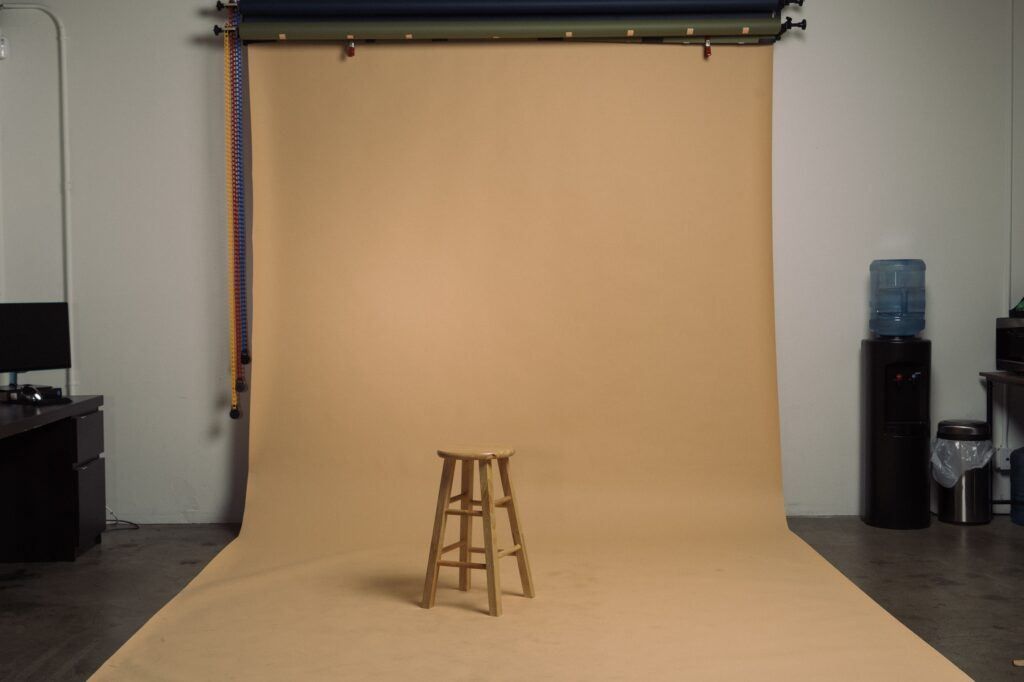
Here you can see a photographic backdrop in action in the studio. Photograph by Chase Wilson
A photographic backdrop is something that is created specifically to fill in the background of an image. That’s the basic definition and, like all things, it can be stretched a little.
Just about anything can be used as a photographic backdrop if you’re taking a DIY approach. Many studio photographers will opt to make their own, using found materials or creating themed backdrops they can use over and over again for a certain type of shoot.
However, the most common types of backdrop are:
- Paper backdrops, which come in rolls and a variety of colors
- Vinyl backdrops, which can be printed with any pattern and either folded or rolled
- Fabric backdrops, which is any type of fabric that can be hung
- Solid backdrops, such as something made from planks of wood, a sheet of metal, or even foamboard, must be kept in the same position at all times and may be installed on wheels for easy maneuverability
Paper, fabric, and vinyl backdrops can be hung from a backdrop stand or attached to the wall, as in our example photograph here, with a pulley system.
Key Lesson: Backdrops will fill the background of your image, and you can choose from a range of materials and patterns or colors to suit your shoot.
How You Can Use a Photographic Backdrop
The most basic use of a photographic backdrop is to give you a smooth, uniform, and professional-looking background. In many cases, this can be preferable to what would be behind your subject instead, such as a messy studio with lots of wires, or a plain white wall which is not very exciting.
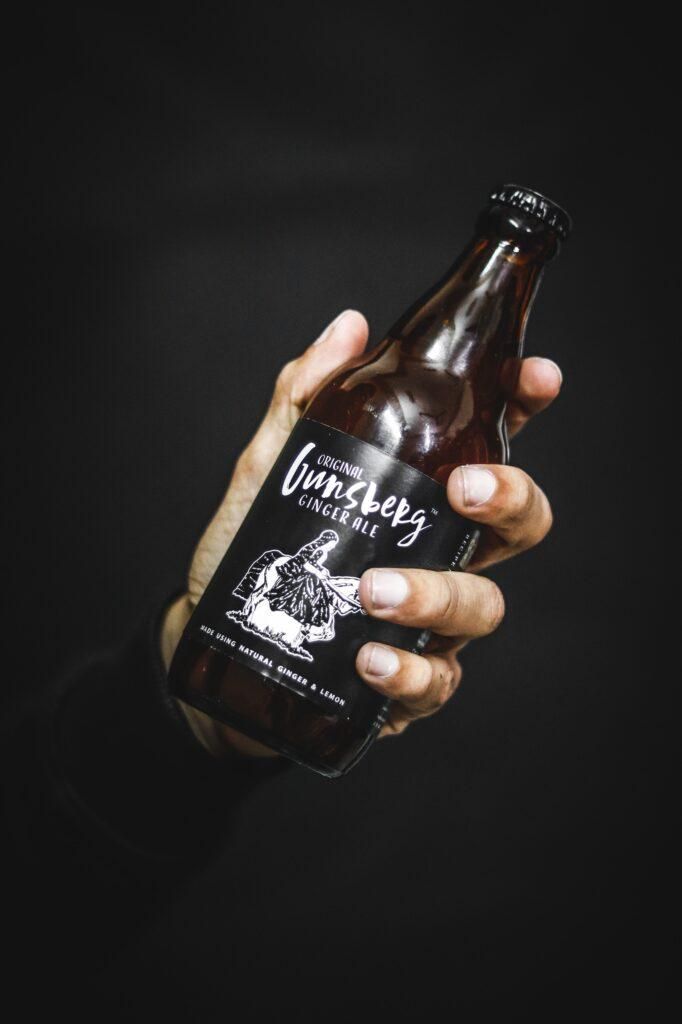
Creating a plain, dark base with this backdrop allows the subject to stand out much more, and creates an edgy mood. Photograph by Dollar Gill
The backdrop itself can also affect the mood and feel of the image. You can use bright colors to inject a sense of fun and clash against or complement your subject. Muted colors can convey a darker emotion, and pastels can harken back to younger years or events like Easter.
Patterns can also play a key part here. You might add a brick or wooden wall to give the impression that your perfectly lit studio shot was actually taken outside. A fun zig-zag pattern can add a sense of celebration to a birthday photoshoot. Red hearts on a pink background can come in handy for Valentine’s sessions. There are lots of directions in which to take this!
The most basic use of a photographic backdrop is to give you a smooth, uniform, and professional-looking background.
You can even have a backdrop printed to look like a real place as if your subject is standing in front of it!
Finally, the backdrop can be used as a way to add more drama or focus by isolating the subject. Picture a white or pale item standing out against a black backdrop – it’s a very effective way to ensure that all of the attention is on the subject and nowhere else.
Key Lesson: A backdrop gives you more control over the look of the finished image, changing the mood and directing the attention of the viewer.
Problems to Troubleshoot With Photographic Backdrops
There may be issues that arise with photographic backdrops, and it’s important to know what to do if they do occur.
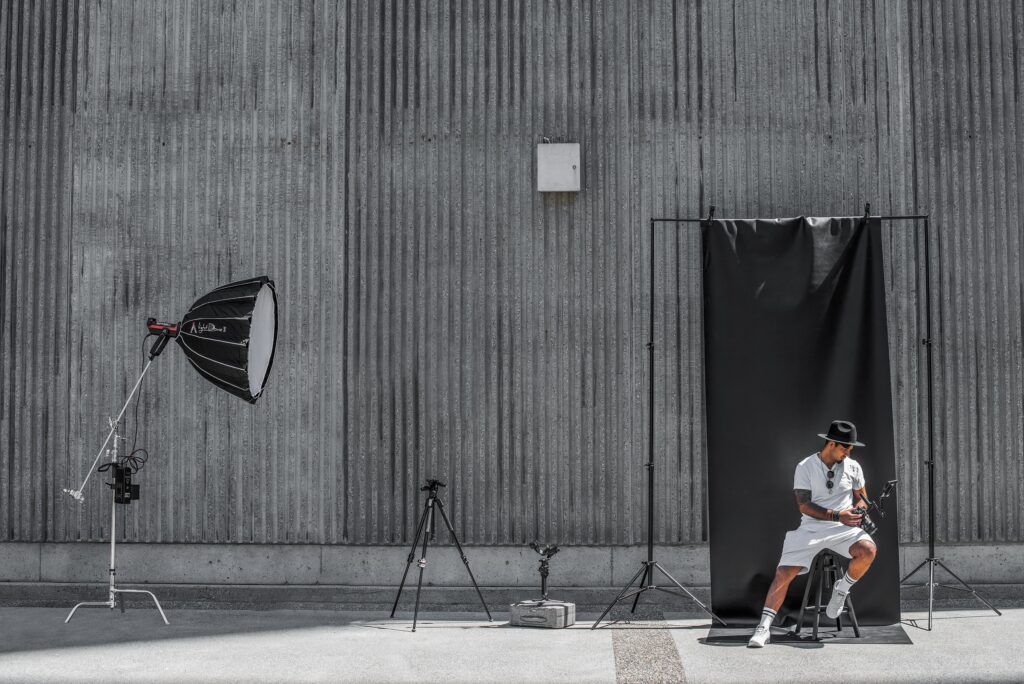
This backdrop is probably too thin and is definitely hanging with wrinkles and folds! Photograph by H.F.E. & Co
Here are some common problems, and how to deal with them.
- The backdrop doesn’t cover the whole area behind the model: you must move it higher or purchase a wider backdrop. Bear in mind that some backdrops are created for still life purposes and therefore can be much thinner!
- The backdrop is wrinkled: if using a fabric backdrop, you can use a steamer to iron it out. For vinyl backdrops, store them more carefully, and for paper backdrops, you can rip off the paper and unwind it to a smooth part of the roll.
- The backdrop is dirty: either wash it or, for paper backdrops, rip off the dirty part and unroll to a clean area.
- The backdrop is too thin, allowing light to pass through: double wrap your backdrop on the stand, or place another backdrop behind it for double thickness.
- The backdrop is the wrong color: you can change this easily in post-production by selecting the whole area and using the hue slider!
Key Lesson: Looking after your backdrops and storing them well can take care of the most common issues, and you should also make sure of your measurements when purchasing.
Why You Might Not Want a Photographic Backdrop
There are, of course, situations when you might not want a photographic backdrop. If your background is already plain enough or you’ve chosen a location on purpose, why would you want to cover it?
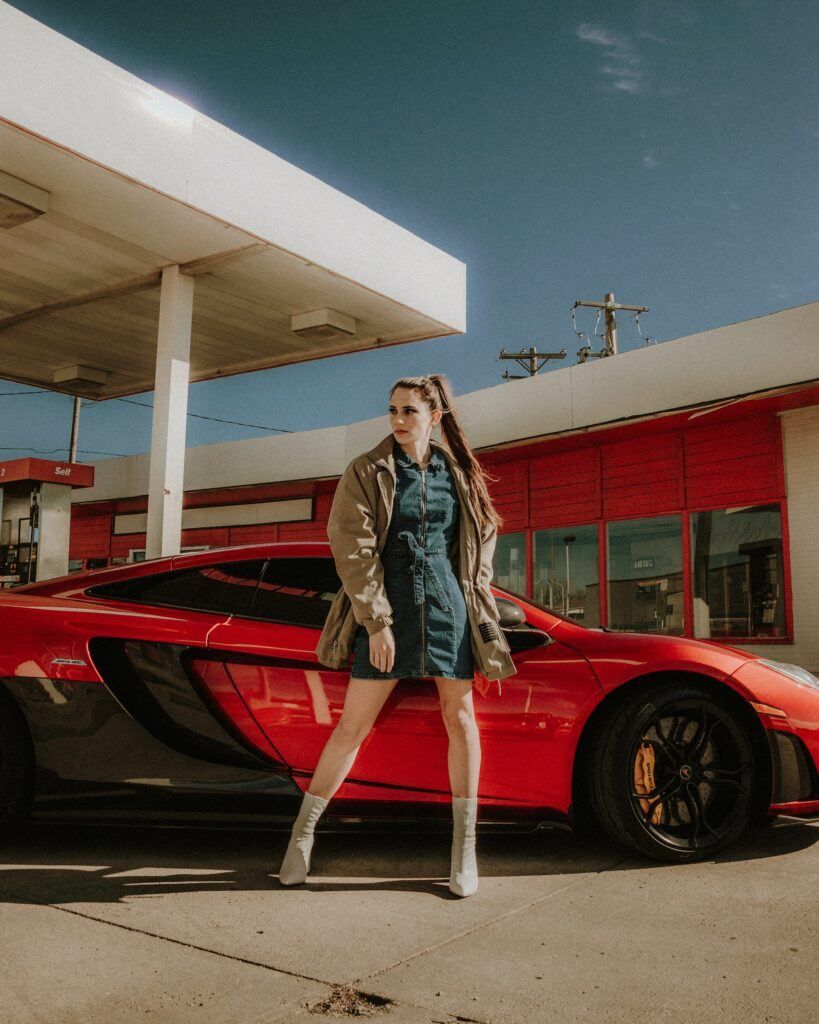
When you’re shooting in a dynamic location, you don’t want to block the background out! Photograph by Joshua Rondeau
Note that some photographers can be tempted to use a green backdrop when intending to change it out later in post-production because they know that a green screen is used for effects on film. The problem is that the green screen is for video, primarily. In fact, a green backdrop can leave a green cast on the subject in a photograph, and it’s just as easy to use any color. You can select the backdrop in Photoshop no matter what color it is, so long as it is a solid color and not present in your model’s clothes for ease of selection.
Key Lesson: If you want to add effects, green isn’t always the way to go, and you might not want to add any backdrop at all in some cases.
How to Care for and Store Your Photographic Backdrop
Now that you have your backdrops sorted, here’s how to look after them! Storing and using them correctly can help them last a lot longer.
For paper backdrops:
- Avoid shoes on the backdrop unless necessary for your model
- Roll them carefully back into place after use
- Tear off any damaged or dirty sections before shooting
- Use gaffer tape along the bottom edge of the backdrop to keep it in place during the shoot
- If attaching to a backdrop stand, clip at the top onto the horizontal pole only – clips further down may rip the paper
- Unroll them carefully once on the backdrop stand: don’t crease the paper as you pull it down, and make sure to avoid pulling it out too far. Once it covers the floor area where your subject will be placed, there’s no need to go further
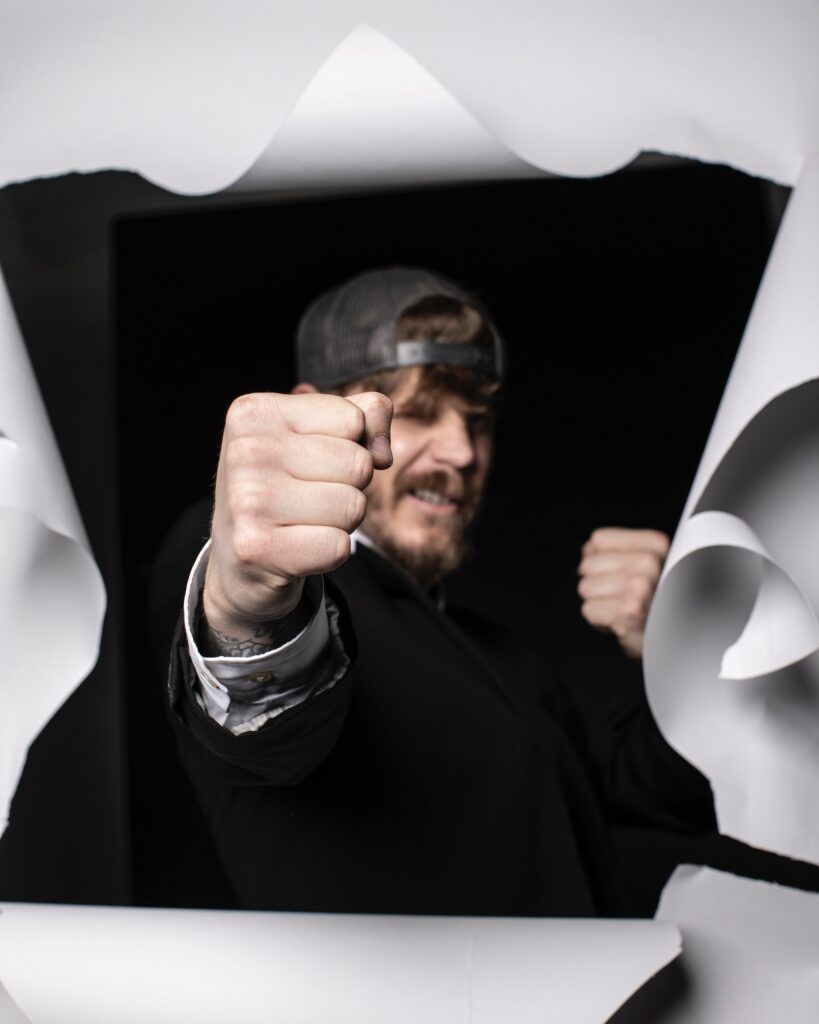
This is probably not the best way to care for your backdrop or preserve it for the next shoot! Photograph by Alexander Jawfox
For vinyl backdrops:
- Wipe down with a soft, damp cloth if dirty, and dry with a towel before putting away
For fabric backdrops:
- Put them through the washing machine if necessary, but be sure to check the washing instructions first
For all backdrops, store them in a clean and dry area, and avoid allowing them to get wet or damp. Keep them neat and tidy at all times and rolled up rather than folded to avoid wrinkles or creases. Keep them out of direct sunlight to avoid fading.
For all backdrops, store them in a clean and dry area, and avoid allowing them to get wet or damp.
Key Lesson: Know how to take care of your particular types of backdrop to make them last longer and give better results!
Recommended Reading: If you’d like to learn how to create amazing portraits, grab a copy of Photzy’s premium guide: The Art of Portrait Photography.
Conclusion
Backdrops can come in lots of shapes and sizes, not to mention textures and colors! Remember these tips:
- Backdrops can be made from vinyl, paper, fabric, or your own choice of material.
- Backdrops offer you more control over the image and better focus.
- A backdrop can change the mood of your composition.
- Wrinkled, dirty, or thin backdrops can be fixed.
- Make sure to purchase the right size and type of backdrop for your needs.
- Don’t feel that you always have to use a backdrop if it doesn’t fit the shoot.
- Look after and store your backdrops properly to make them last longer.
Self-Check Quiz:
- What are the three most common types of material used for backdrops?
- Why might you need different colors or patterns of the backdrop?
- How can a plain black backdrop be effective?
- What should you do if your paper backdrop is creased or wrinkled?
- Why must you check your backdrop measurements carefully before purchasing?
- What should you do if you don’t have the right color backdrop?
- Should you use a green screen backdrop for still photography?
- When should you walk on your paper backdrop with shoes?
- Where should you store your backdrops when they’re not in use?
- How should you clean a vinyl backdrop?
- How should you clean a fabric backdrop?
- How can you prevent your backdrops from fading?
Assignment:
You can work with small backdrops that are around the size of a tabletop if you want to experiment with colors and textures first. Order something small online and have a go at shooting still life in front of it to see what a difference it can make!

